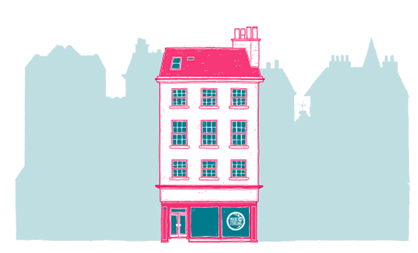Dr Katherine Champion, Senior Lecturer in Media and Communication, Faculty of Arts and Humanities
Dr Maria Velez Serna, Lecturer in Communications, Media and Culture, Faculty of Arts and Humanities
Dr Susan Berridge, Senior Lecturer in Communications, Media and Culture, Faculty of Arts and Humanities

The art and cultural sector is on the brink of catastrophe within the UK. In Scotland, despite a reversal of Scottish government proposed cuts of around £6.6m to Scotland’s arts and culture sector in February due to pressure from campaigners, cultural organisations and workers remain in a worryingly precarious position. In recent months, landmark institutions like the Edinburgh Filmhouse have closed their doors, others have been forced to make widespread redundancies or mothball their facilities. The impact of the pandemic, Brexit, rising inflation, falling income and spiralling operating costs, have all contributed to a hugely difficult context for all cultural organisations to survive in. This is most keenly felt by smaller grassroots organisations who cannot absorb such costs.
Why is protecting art and cultural hubs so important?
We know that arts and culture are vital to our societies and offer a wide range of cultural, social and economic benefits. Some of these are tangible and readily quantifiable, while others are much harder to evidence. Hubs are an essential lynchpin within the sector and act as convenors bringing together a diverse range of actors and mitigating issues relating to the precariousness of creative work by offering a supportive, safe context for activities. Grassroots arts and cultural organisations have longstanding trusted relationships with their local communities and foster complex interrelationships which allow valuable infrastructure and assets (both physical and more intangible) to be developed. Once lost, such ecologies cannot be conjured up again if a decision is made to restart funding.
Care in creative hubs during covid
The essential role of creative and cultural hubs was at no time more visible than during the pandemic. They played a vital role in adapting and innovating to provide a lifeline to isolated individuals and communities facing a huge range of challenges. They supported people in local communities, collecting and re-distributing resources, sharing information, coordinating responses and connecting with the isolated. As part of our project ‘Mapping ecologies of care in creative hubs during covid-19’, we sought to capture and make visible the mobilisation of networks of care in a creative hub in a small city during the coronavirus crisis. The work was carried out in partnership with and focused on Creative Stirling, founded in 2012 as a small collective of creatives working together to support grassroot arts and culture. Since 2016, it has operated as a social enterprise and in 2018 opened 44 King Street, a former department store which has been transformed into the ‘Made in Stirling’ shop. The shop supports a collective of a hundred local artists and makers, and includes a community gallery, workshop and creative studio spaces, venue and event space.
The project documented in detail the activities carried out by Creative Stirling, the Kitchen at 44 King Street and Transition Stirling, along with the community groups and individuals with which they were linked during the various pandemic-prompted lockdowns between March 2020 and October 2022. Many of these activities directly addressed local needs through an empowering mutual aid ethos. Examples include(but were not limited to):
- the immediate set up of Stirling Community Food – founded by the Kitchen at 44 King Street and hosted in the physical space of the hub for six months from March 2020 offering excess food to the community for free
- delivery of creative packs for local children
- the facilitation of a mobile library
- the distribution of Christmas hampers to families
- the organisation of free online workshops to tackle social isolation and provision of advice to those unable to work due to the pandemic, including local artists.
Attuned to local needs
The project spotlighted the importance of local networks of creative workers and infrastructures in the ability to respond to community needs during the pandemic. Whilst the hub was closed and in receipt of less prescriptive emergency funding, there were more opportunities to attune activities to the needs of the local context and develop a place-based response to inequalities in the community.
An ethos of care was built into their organisational structures and practice and embodied within the relationships mobilised during the pandemic response. The Creative Stirling experience evidences the concrete potential of cultural hubs to contribute to wellbeing, not only through their delivery of cultural and creative activities and products, but also crucially through their nurturing of relationships with the local community. It showed that if you centre care and trust people on the ground, solutions to complex problems can be found.
Building sustainable creative hubs
Experiences during the pandemic have laid bare the vital importance of informal community networks, but have also stretched them nearly to breaking point. The physical spaces of arts and cultural organisations have come under threat. Having an accessible central space was critical in the pandemic response of Creative Stirling as the hub at 44 King Street offered flexibility over how it could be used in the early days of lockdown.
Creative hubs and art spaces can be transformative especially in our struggling town and city centres. This crisis prompted a redrawing of priorities and tactics, demanding that the post-pandemic recovery is not a return to the status quo. This involves reimagining what thriving can mean for communities, beyond economic growth metrics. Taking place on the 2nd of June 2023 we will be holding a workshop at Creative Stirling, 44 King Street to probe the characteristics of more sustainable networks of support for creative hubs within our towns and cities. We will share learning from the project around viable strategies to develop them to protect the infrastructure, relationships and assets that have been so critical to Scotland’s communities during the pandemic.
For more information please see the event page.
